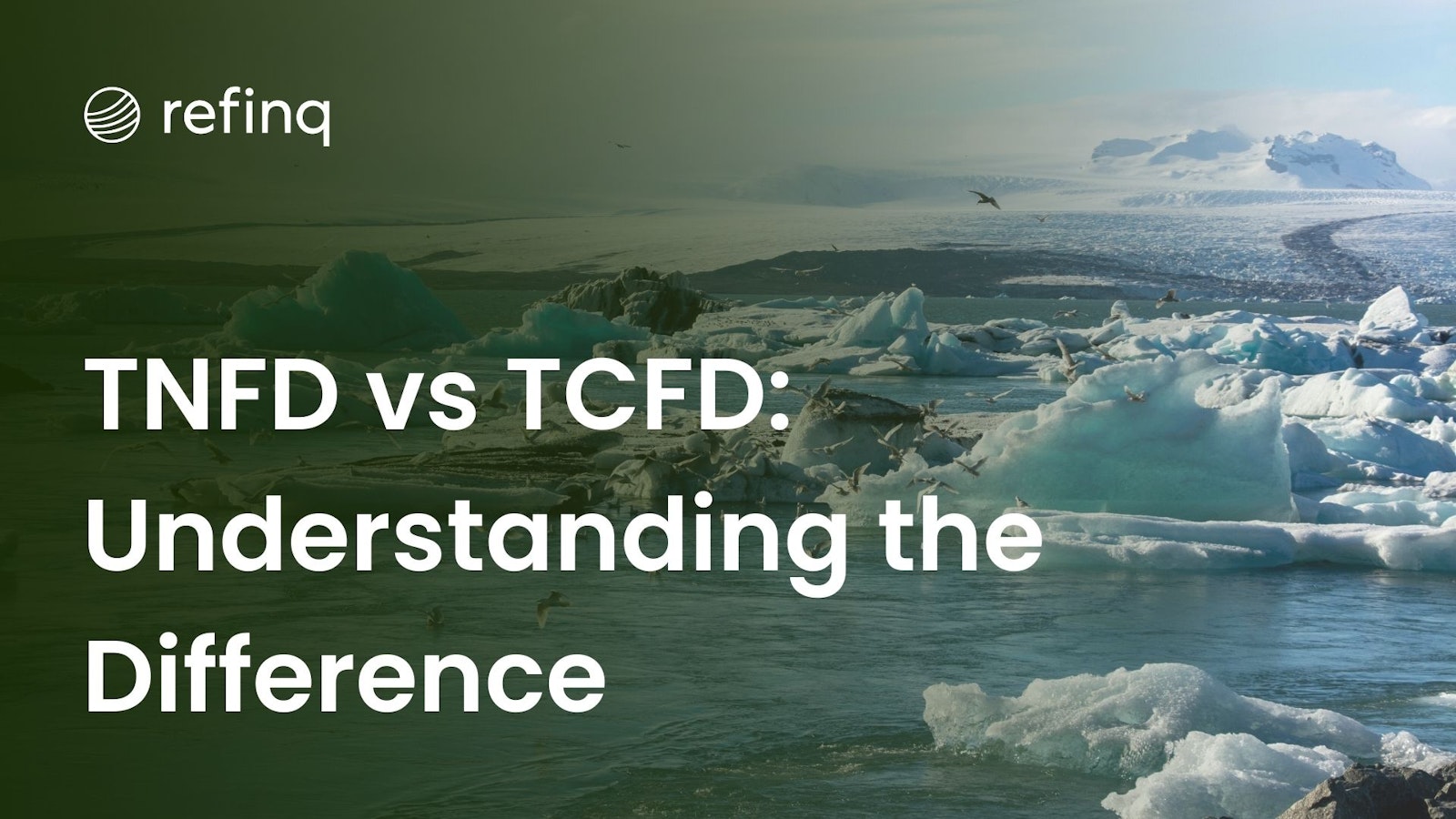

Many of us are trying to wrap our heads around the various frameworks designed to help companies be more sustainable. Two of the hottest topics in ESG reporting are TNFD (Taskforce on Nature-related Financial Disclosures) and TCFD (Task Force on Climate-related Financial Disclosures). While they might sound similar, each focuses on a different part of our environment. For a friendly introduction to how these frameworks work and why they matter, check out Refinq, a platform that uses cutting-edge technology to help businesses manage environmental risks. Also, take a look at Refinq's blog on TNFD vs TCFD for a detailed yet approachable comparison.
When we talk about environmental risk, it’s easy to feel overwhelmed by all the technical jargon. But at its core, the conversation is about protecting our planet while making smart business decisions. TCFD is all about how companies can disclose climate-related risks—think of it as the framework that helps businesses explain how climate change might impact their bottom line. On the flip side, TNFD takes things one step further by including nature and biodiversity risks, emphasizing how important our natural world is for long-term stability. To dive a little deeper into these ideas, you might also enjoy reading more on WhiteCase’s insights on TNFD.
TCFD was created by the Financial Stability Board to help companies disclose information about the financial risks posed by climate change. It breaks things down into four easy-to-understand areas:
This framework is all about transparency and helping investors understand the potential financial impacts of a changing climate. For more on this, TechTarget’s comparison of ESG reporting frameworks offers some great insights.
TNFD is a newer kid on the block that expands the conversation beyond just climate risks to include nature-related risks. In other words, while TCFD is like the “climate report card,” TNFD is the “biodiversity report card” that covers things like deforestation, water scarcity, and the loss of natural habitats. By considering these broader environmental factors, TNFD aims to give a fuller picture of the risks companies face in a rapidly changing world. If you’re curious about the details, check out Manifest Climate’s blog on TNFD.
For investors and financial institutions, these differences are important. TCFD helps paint a clear picture of climate risks, which is vital for assessing financial stability. TNFD, however, adds another layer by incorporating nature and biodiversity data, offering a more holistic view of environmental risks that could impact a company’s future. This more complete picture can be a game-changer for building robust ESG strategies. To see how enhanced disclosures can drive better outcomes, EY’s insights on climate reporting are worth a read.
Managing ESG disclosures can be complicated, but you don’t have to do it alone. Enter Refinq, a pioneering SaaS platform that makes it easier for businesses to handle both climate and nature-related risks. Refinq uses advanced machine learning and geospatial analysis to process over 2.5 billion data points from earth observation and climate models. This technology turns complex environmental data into simple, actionable insights.
If you’re looking for a tool to streamline your ESG reporting and risk management, Refinq's solutions might be just what you need.
In a nutshell, while TNFD and TCFD are related and share the common goal of enhancing transparency around environmental risks, they are not the same. TCFD zeroes in on climate-related risks, offering a framework that many companies have adopted to disclose how climate change could affect their finances. TNFD, on the other hand, broadens the scope to include risks related to nature and biodiversity, providing a more expansive view of the challenges businesses face today. For companies looking to build a truly comprehensive ESG strategy, integrating insights from both frameworks—and leveraging advanced platforms like Refinq—can make all the difference.
Understanding the differences between TNFD and TCFD is key to navigating today’s complex ESG landscape. While TCFD focuses on the financial impacts of climate change, TNFD expands this vision by addressing the risks associated with nature and biodiversity. By combining insights from both frameworks, companies can create more robust and resilient strategies for the future. Platforms like Refinq are invaluable in this journey, offering the advanced data integration and analysis needed to manage environmental risks effectively. Embracing these tools not only ensures regulatory compliance but also drives long-term sustainability and growth.